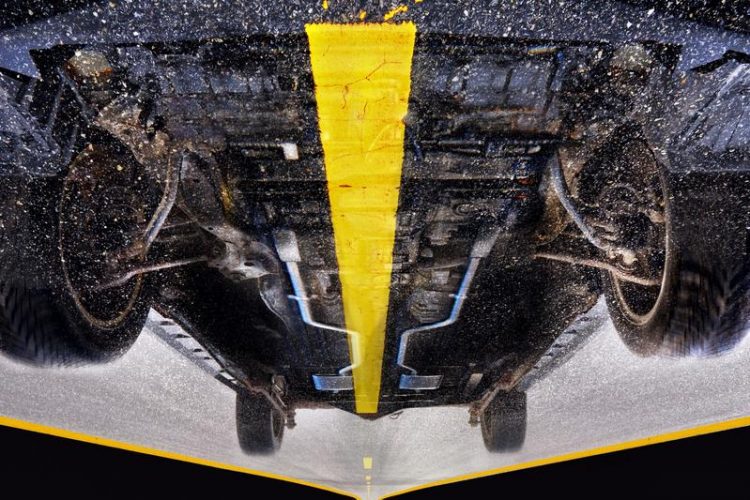New composite protects from corrosion at high mechanical stress

New composite coatings prevent corrosion caused by splash water or dirt Source: Uwe Bellhäuser; free within this press release
The INM from Saarbruecken will be one of the few German research institutions at the TechConnect World trade fair on 16 and 17 June in Washington DC, USA, where it will be presenting this and other results. Working in cooperation with the VDI Association of German Engineers it will be showcasing its latest developments at Stand 301 in the German Area.
“This patented composite exhibits its action by spray application”, explains Carsten Becker-Willinger, Head of the Nanomers Program Division. “The key is the structuring of this layer – the protective particles arrange themselves like roof tiles. As in a wall, several layers of particles are placed on top of each other in an offset arrangement; the result is a self-organized, highly structured barrier”, says the chemical nanotechnology expert.
The protective layer is just a few micrometers thick and prevents penetration by gases and electrolytes. It provides protection against corrosion caused by aggressive aqueous solutions, including for example salt solutions such as salt spray on roads and seawater, or aqueous acids such as acid rain. The protective layer is an effective barrier, even against corrosive gases or under pressure.
After thermal curing, the composite adheres to the metal substrate, is abrasion-stable and impact-resistant. As a result, it can withstand high mechanical stress. The coating passes the falling ball test with a steel hemispherical ball weighing 1.5 kg from a height of one meter without chipping or breaking and exhibits only slight deformation, which means that the new material can be used even in the presence of sand or mineral dust without wear and tear.
The composite can be applied by spraying or other commonly used wet chemistry processes and cures at 150-200°C. It is suitable for steels, metal alloys and metals such as aluminum, magnesium and copper, and can be used to coat any shape of plates, pipes, gear wheels, tools or machine parts. The specially formulated mixture contains a solvent, a binder and nanoscale and platelet-like particles; it does not contain chromium VI or other heavy metals.
Your expert:
Dr. Carsten Becker-Willinger
INM – Leibniz Institute for New Materials
Head Nanomers®
Phone: +49681-9300-196
nanomere@inm-gmbh.de
INM conducts research and development to create new materials – for today, tomorrow and beyond. Chemists, physicists, biologists, materials scientists and engineers team up to focus on these essential questions: Which material properties are new, how can they be investigated and how can they be tailored for industrial applications in the future? Four research thrusts determine the current developments at INM: New materials for energy application, new concepts for medical surfaces, new surface materials for tribological applications and nano safety and nano bio. Research at INM is performed in three fields: Nanocomposite Technology, Interface Materials, and Bio Interfaces.
INM – Leibniz Institute for New Materials, situated in Saarbruecken, is an internationally leading centre for materials research. It is an institute of the Leibniz Association and has about 195 employees.
Weitere Informationen:
http://www.inm-gmbh.de/en
http://www.leibniz-gemeinschaft.de/en
Media Contact
All latest news from the category: Materials Sciences
Materials management deals with the research, development, manufacturing and processing of raw and industrial materials. Key aspects here are biological and medical issues, which play an increasingly important role in this field.
innovations-report offers in-depth articles related to the development and application of materials and the structure and properties of new materials.
Newest articles

Superradiant atoms could push the boundaries of how precisely time can be measured
Superradiant atoms can help us measure time more precisely than ever. In a new study, researchers from the University of Copenhagen present a new method for measuring the time interval,…

Ion thermoelectric conversion devices for near room temperature
The electrode sheet of the thermoelectric device consists of ionic hydrogel, which is sandwiched between the electrodes to form, and the Prussian blue on the electrode undergoes a redox reaction…

Zap Energy achieves 37-million-degree temperatures in a compact device
New publication reports record electron temperatures for a small-scale, sheared-flow-stabilized Z-pinch fusion device. In the nine decades since humans first produced fusion reactions, only a few fusion technologies have demonstrated…





















